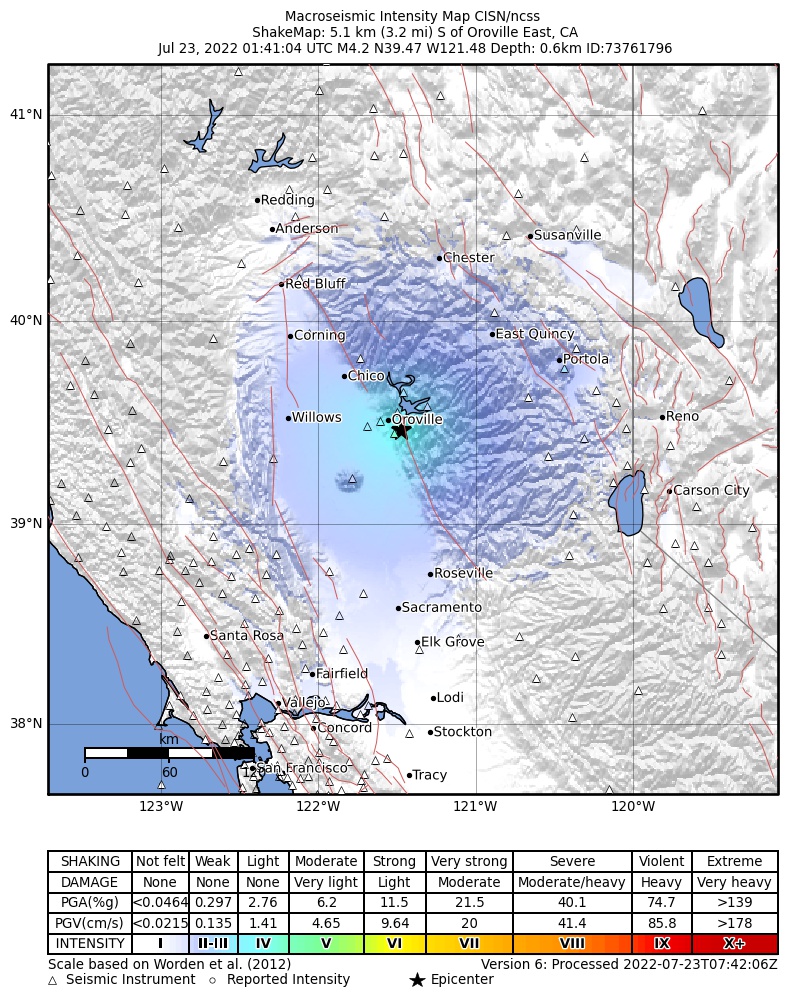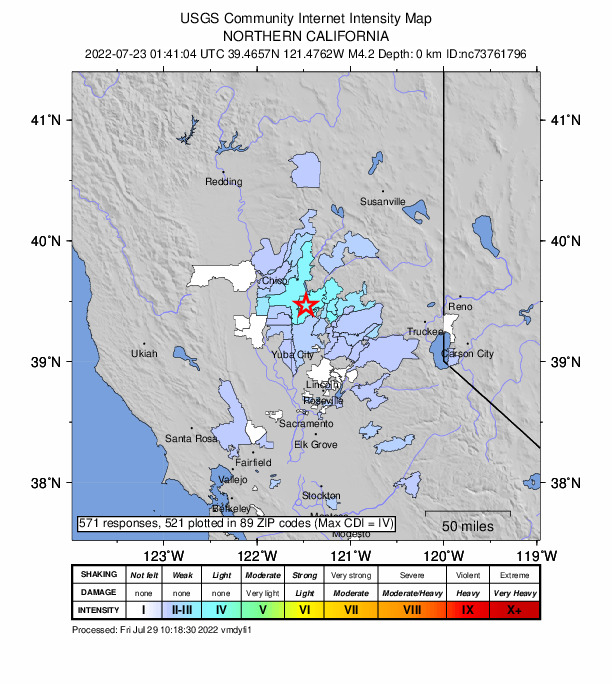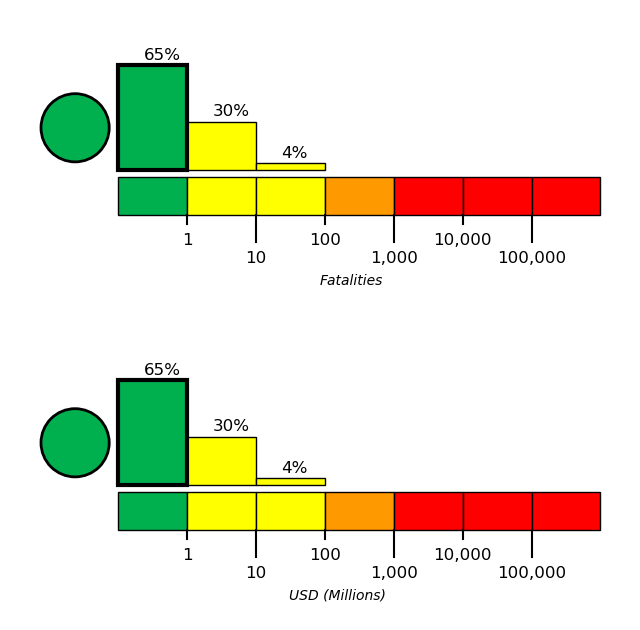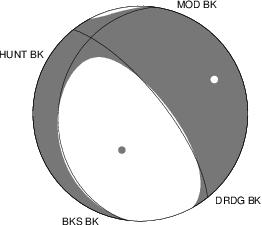Generating page for event nc73761796...

4.24, 5km S of Oroville East, CA
Disclaimer: This information is intended solely for research and should not be used for communications with the media or the public.
Table Of Contents
Mainshock Details
(top)
Information and plots in the section are taken from the USGS event page, accessed through ComCat.
| Field | Value |
|---|
| Magnitude | 4.24 (mw) |
| Time (UTC) | Sat, 23 Jul 2022 01:41:04 UTC |
| Time (UTC) | Sat, 23 Jul 2022 01:41:04 UTC |
| Location | 39.465668, -121.476166 |
| Depth | 0.59 km |
| Status | reviewed |
USGS Products
(top)
Nearby Faults
(top)
1 UCERF3 fault section is within 10km of this event's hypocenter:
- Swain Ravine - Spenceville: 2.47km
Sequence Details
(top)
These plots show the aftershock sequence, using data sourced from ComCat. They were last updated at 2022/07/30 00:40:25 UTC, 6.96 days after the mainshock.
0 M≥0 earthquakes within 10 km of the mainshock's epicenter.
Pre Event Seismicity Results
(top)
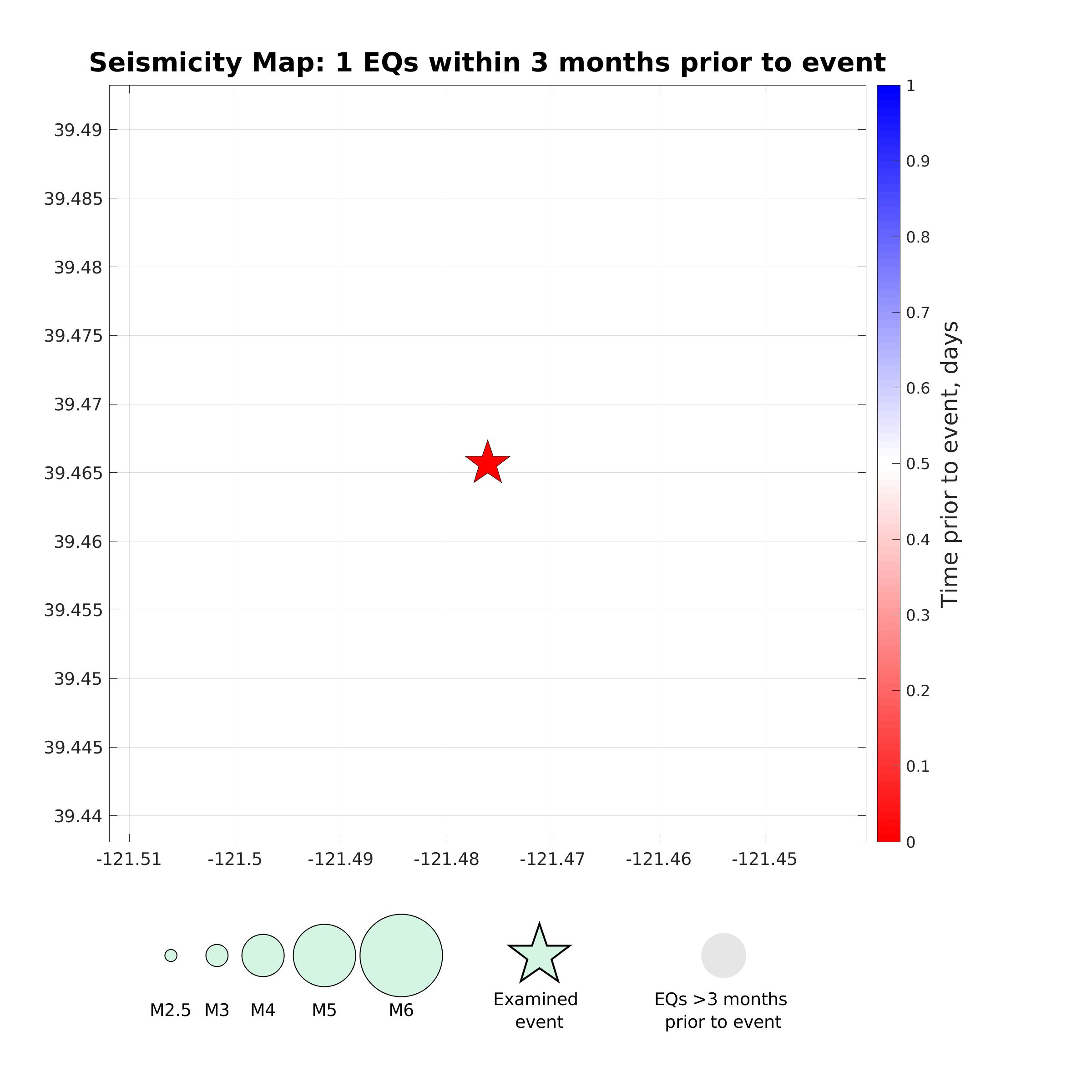
Figure 1. Seismicity Map
Map view of earthquakes (circles) with magnitude M2.0+ that occurred within 3 months and within 5 rupture lengths from the event considered (star). Circle size is proportional to magnitude (see legend) and color represents the time prior to the event considered (see colorbar).
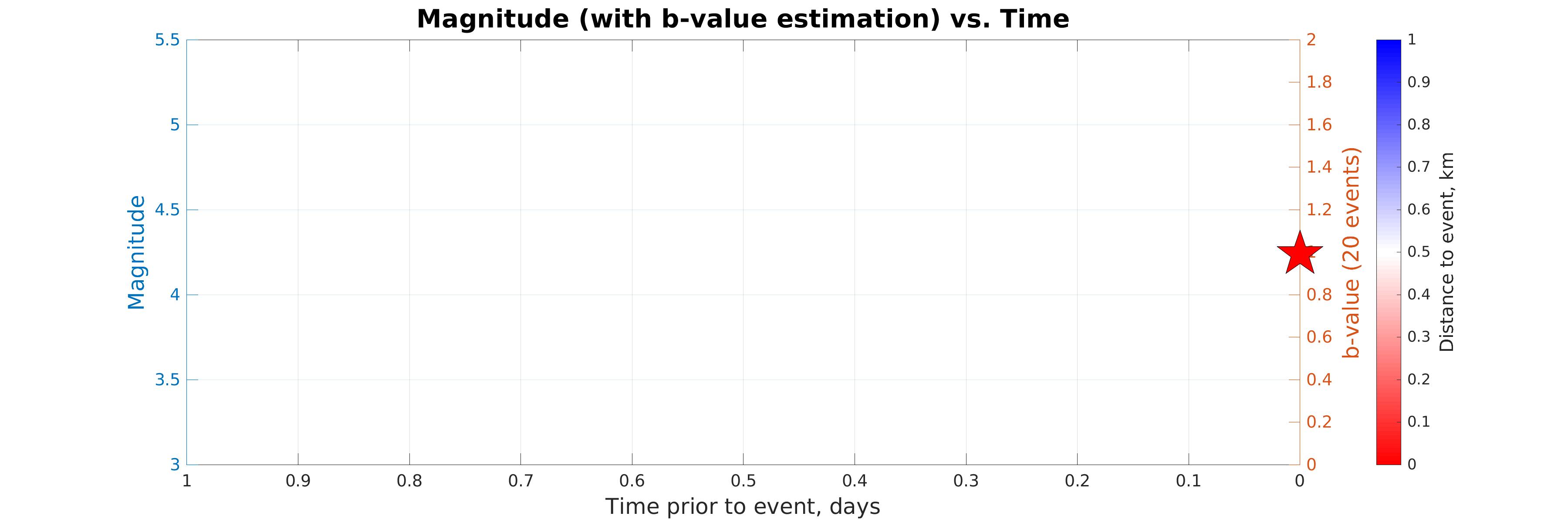
Figure 2. Magnitude (with b-value estimation) vs. Time
Magnitude (left axis) and b-value (right axis) vs. time of earthquakes in the seismicity map prior to the event considered (star). Color represents distance to the event (see colorbar). The b-value (gray line) is estimated within a sliding window of 20 days; results are only reported for windows with >5 events. The gray dashed lines correspond to a 95% CI for the b-value. The b-value estimation and confidence intervals are according to Tinti and Mulargia (1987).
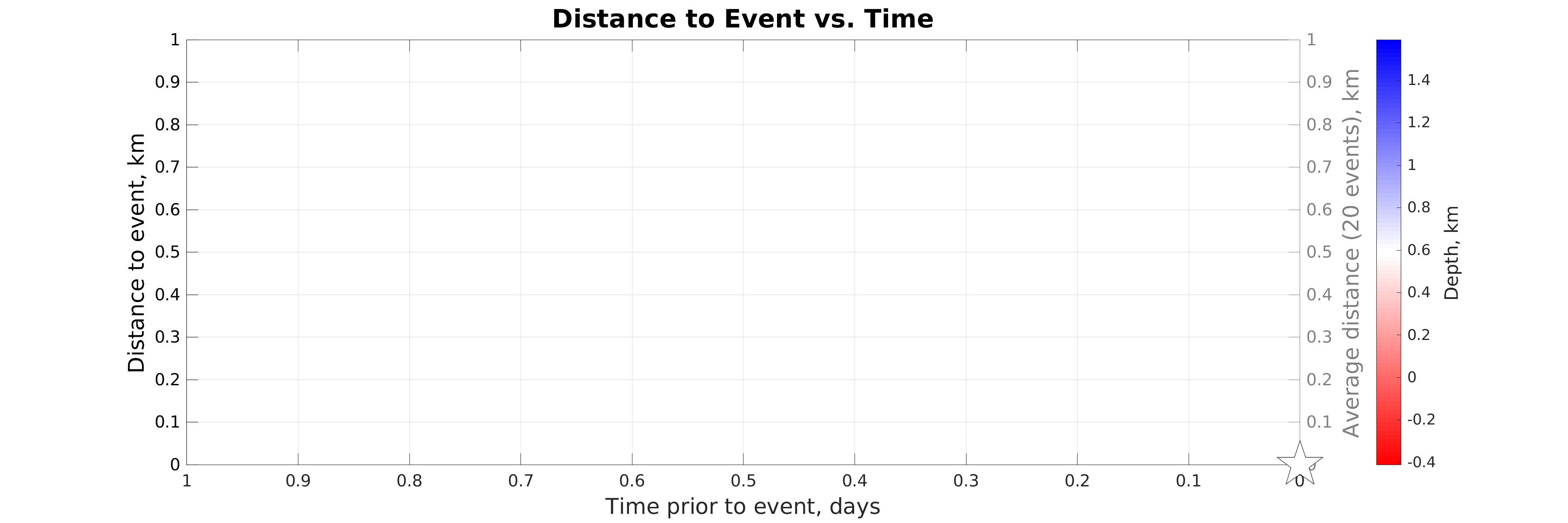
Figure 3. Distance vs. Time
Distance (left axis) vs. time of earthquakes in the seismicity map prior to the event considered (star). Color represents hypocentral depth (see colorbar). The gray line shows distance to event considered averaged within sliding time window of 20 events.
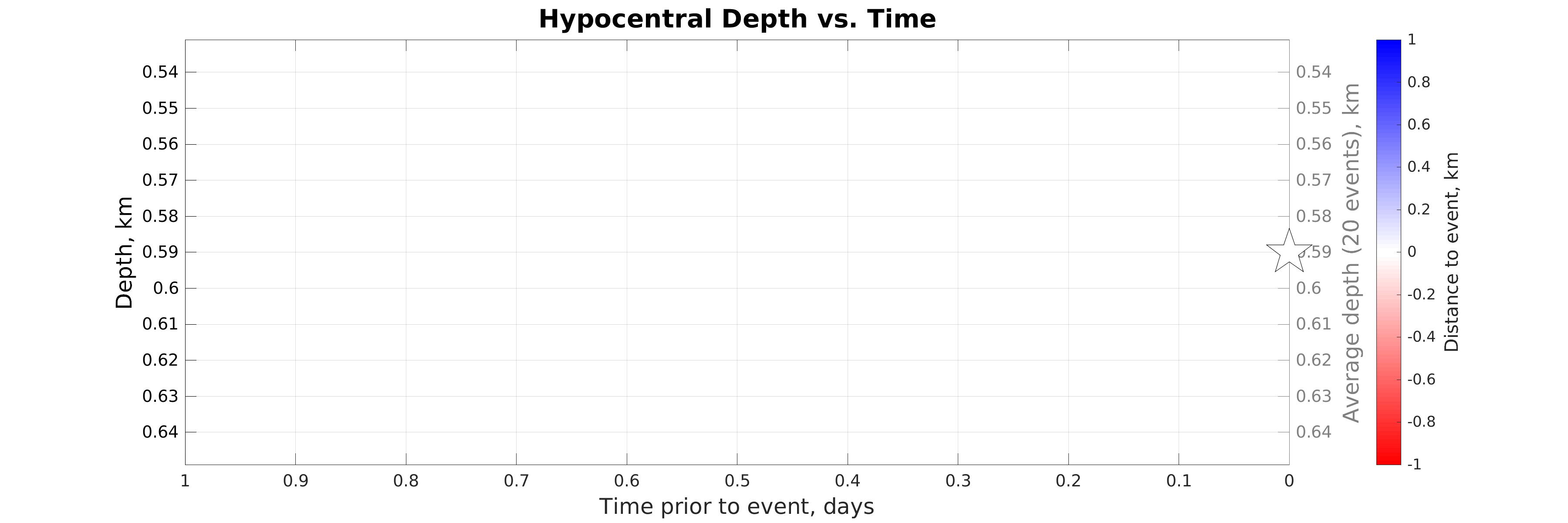
Figure 4. (Depth vs. Time)
Hypocentral depth (left axis) vs. time of earthquakes in the seismicity map prior to the event considered (star). Color represents distance to the event considered (see colorbar). The gray line shows the depth averaged within sliding time window of 20 events.
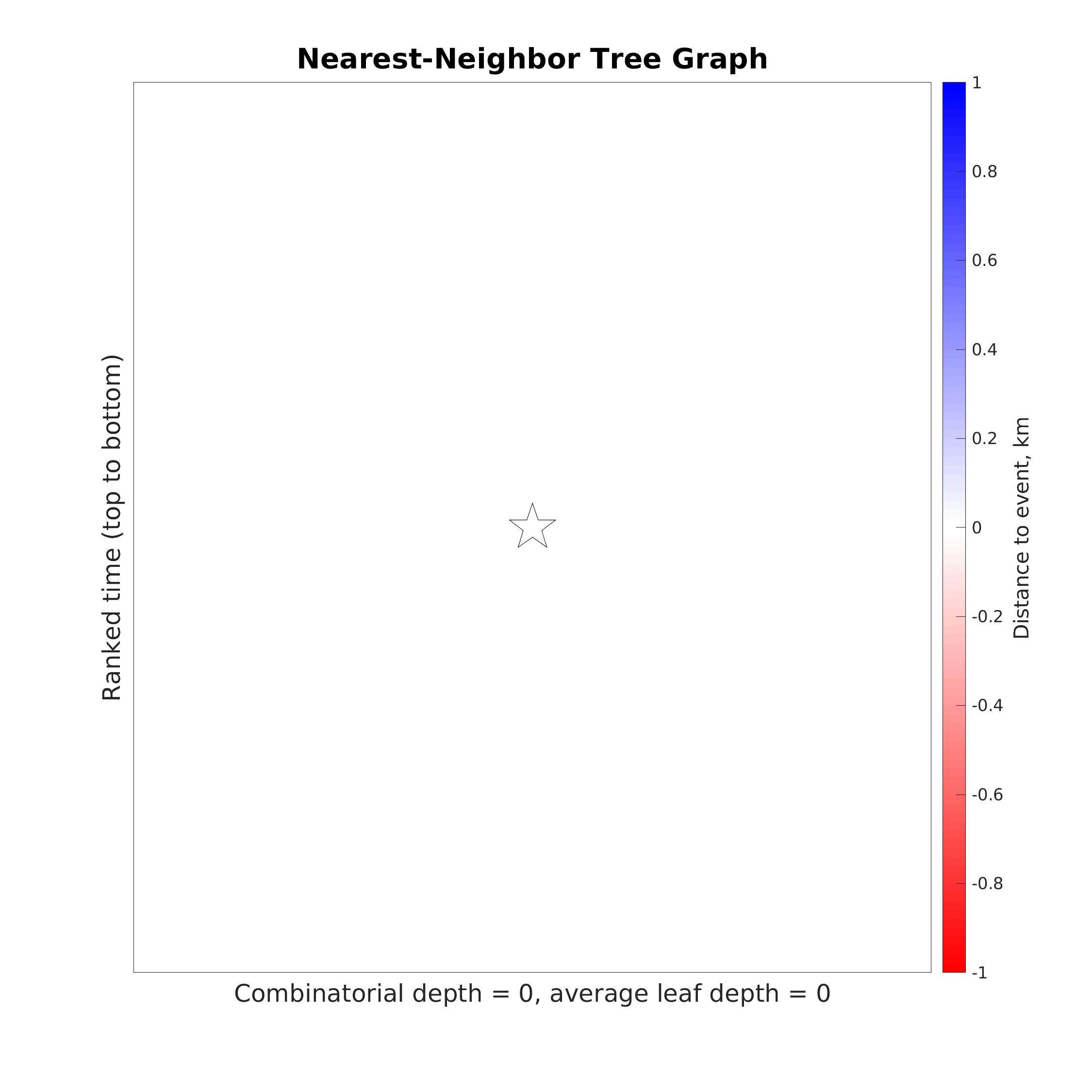
Figure 5. Nearest-Neighbor Tree Graph
Tree graph representing nearest-neighbor connections (gray lines) among the earthquakes in the seismicity map prior to the event considered (star). Y-axis represents ranked time (from top to bottom). X-coordinates of events are calculated for proper visual embedding of the tree in the plane and do not represent a physical characteristic. Color represents distance to the event considered (see colorbar). The combinatorial depth of the tree (number of generations) and the average leaf depth are marked. The results are based on the methodology of Zaliapin and Ben-Zion (2013).
